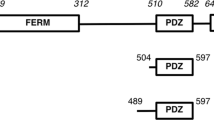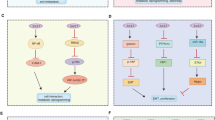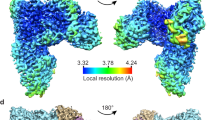Abstract
The oncoproteins of small DNA tumor viruses promote tumorigenesis by complexing with cellular factors intimately involved in the control of cell proliferation. The major oncogenic determinants for human adenovirus type 9 (Ad9) and high-risk human papillomaviruses (HPV) are the E4-ORF1 and E6 proteins, respectively. These seemingly unrelated viral oncoproteins are similar in that their transforming activities in cells depend, in part, on a carboxyl-terminal PDZ domain-binding motif which mediates interactions with the cellular PDZ-protein DLG. Here we demonstrated that both Ad9 E4-ORF1 and high-risk HPV E6 proteins also bind to the DLG-related PDZ-protein MAGI-1. These interactions resulted in MAGI-1 being aberrantly sequestered in the cytoplasm by the Ad9 E4-ORF1 protein or being targeted for degradation by high-risk HPV E6 proteins. Transformation-defective mutant viral proteins, however, were deficient for these activities. Our findings indicate that MAGI-1 is a member of a select group of cellular PDZ proteins targeted by both adenovirus E4-ORF1 and high-risk HPV E6 proteins and, in addition, suggest that the tumorigenic potentials of these viral oncoproteins depend, in part, on an ability to inhibit the function of MAGI-1 in cells.
This is a preview of subscription content, access via your institution
Access options
Subscribe to this journal
Receive 50 print issues and online access
$259.00 per year
only $5.18 per issue
Buy this article
- Purchase on Springer Link
- Instant access to full article PDF
Prices may be subject to local taxes which are calculated during checkout











Similar content being viewed by others
References
Bosch FX, Manos MM, Munoz N, Sherman M, Jansen AM, Peto J, Schiffman MH, Moreno V, Kurman R and Shah KV. . 1995 J. Natl. Cancer Inst. 87: 796–802.
Bradford MM. . 1976 Anal. Biochem. 72: 248–254.
Craven SE and Bredt DS. . 1998 Cell 93: 495–498.
Dobrosotskaya I, Guy RK and James GL. . 1997 J. Biol. Chem. 272: 31589–31597.
Fanning AS and Anderson JM. . 1999 J. Clin. Invest. 103: 767–772.
Fisher PB, Babiss LE, Weinstein IB and Ginsberg HS. . 1982 Proc. Natl. Acad. Sci. USA 79: 3527–3531.
Gardiol D, Kuhne C, Glaunsinger B, Lee S, Javier R and Banks L. . 1999 Oncogene 18: 5487–5496.
Gluzman Y. . 1981 Cell 23: 175–182.
Gottardi CJ, Arpin M, Fanning AS and Louvard D. . 1996 Proc. Natl. Acad. Sci. USA 93: 10779–10784.
Harlow E and Lane D. . 1988 Antibodies: a laboratory manual. Harlow E and Lane D. (eds). Cold Spring Harbor Laboratory: Cold Spring Harbor, N.Y. pp 359–420.
Haskins J, Gu L, Wittchen ES, Hibbard J and Stevenson BR. . 1998 J. Cell. Biol. 141: 199–208.
Howley PM. . 1996 Fields Virology, Vol. 2. Fields BN, Knipe DM and Howley PM. (eds). Lippincott-Raven: Philadelphia pp 2045–2076.
Javier R, Raska Jr K, Macdonald GJ and Shenk T. . 1991 J. Virol. 65: 3192–3202.
Javier RT. . 1994 J. Virol. 68: 3917–3924.
Jesaitis LA and Goodenough DA. . 1994 J. Cell. Biol. 124: 949–961.
Kiyono T, Hiraiwa A, Fujita M, Hayashi Y, Akiyama T and Ishibashi M. . 1997 Proc. Natl. Acad. Sci. USA 94: 11612–11616.
Lee SS, Weiss RS and Javier RT. . 1997 Proc. Natl. Acad. Sci. USA 94: 6670–6675.
Lue RA, Marfatia SM, Branton D and Chishti AH. . 1994 Proc. Natl. Acad. Sci. USA 91: 9818–9822.
McAllister RM, Filbert JE, Nicolson MO, Rongey RW, Gardner MB, Gilden RV and Huebner RJ. . 1971 Nat. New Biol. 230: 279–282.
Muller BM, Kistner U, Veh RW, Cases-Langhoff C, Becker B, Gundelfinger ED and Garner CC. . 1995 J. Neurosci. 15: 2354–2366.
Nevins JR and Vogt PK. . 1996 Fields Virology, Vol. 1. Fields BN, Knipe DM and Howley PM. (eds). Lippincott-Raven Publishers: Philadelphia pp 301–343.
Philipp S and Flockerzi V. . 1997 FEBS Lett. 413: 243–248.
Prasad R, Gu Y, Alder H, Nakamura T, Canaani O, Saito H, Huebner K, Gale RP, Nowell PC, Kuriyama K, Miyazaki Y, Croce CM and Cacaani E. . 1993 Cancer Res. 53: 5624–5628.
Sato T, Irie S, Kitada S and Reed JC. . 1995 Science 268: 411–415.
Scheffner M, Werness BA, Huibregtse JM, Levine AJ and Howley PM. . 1990 Cell 63: 1129–1136.
Shenk T. . 1996 Fields Virology, Vol. 2. Fields BN, Knipe DM and Howley PM. (eds). Lippincott-Raven Publishers: Philadelphia pp 2111–2148.
Smith DB and Corcoran LM. . 1994 Current Protocols in Molecular Biology, Vol. 2. Ausubel, FM, Brent R, Kingston RE, Moore DD, Seidman JG, Smith JA and Struhl K. (eds). John Wiley and Sons, Inc.: New York pp 16.7.1–16.7.7.
Thomas DL, Shin S, Jiang BH, Vogel H, Ross MA, Kaplitt M, Shenk TE and Javier RT. . 1999 J. Virol. 73: 3071–3079.
Thomas U, Phannavong B, Muller B, Garner CC and Gundelfinger ED. . 1997 Mech. Dev. 62: 161–174.
Weiss RS, Gold MO, Vogel H and Javier RT. . 1997a J. Virol. 71: 4385–4394.
Weiss RS and Javier RT. . 1997 J. Virol. 71: 7873–7880.
Weiss RS, Lee SS, Prasad BVV and Javier RT. . 1997b J. Virol. 71: 1857–1870.
Weiss RS, McArthur MJ and Javier RT. . 1996 J. Virol. 70: 862–872.
Willott E, Balda MS, Fanning AS, Jameson B, Van Itallie C and Anderson JM. . 1993 Proc. Natl. Acad. Sci. USA 90: 7834–7838.
Woods DF and Bryant PJ. . 1991 Cell 66: 451–464.
Wu H, Reuver SM, Kuhlendahl S, Chung WJ and Garner CC. . 1998 J. Cell. Sci. 111: 2365–2376.
Yang N, Higuchi O and Mizuno K. . 1998 Exp. Cell Res. 241: 242–252.
Acknowledgements
We are indebted to Guy James (University of Texas Health Sciences Center, San Antonio) for generously providing MAGI-1 reagents. We also thank Bruce Stevenson for providing the canine ZO-2 expression plasmid. BA Glaunsinger and SS Lee were recipients of a Molecular Virology Training Grant (T32 AI07471) and the US Army Breast Cancer Training Grant (DAMD17-94-J4204), respectively. This work was supported by grants from the National Institutes of Health (RO1 CA58541), the American Cancer Society (RPG-97-668-01-VM), and the US Army (DAMD17-97-1-7082) to RT Javier and an Associazione Italiana per la Ricerca sul Cancro grant to L Banks.
Author information
Authors and Affiliations
Rights and permissions
About this article
Cite this article
Glaunsinger, B., Lee, S., Thomas, M. et al. Interactions of the PDZ-protein MAGI-1 with adenovirus E4-ORF1 and high-risk papillomavirus E6 oncoproteins. Oncogene 19, 5270–5280 (2000). https://doi.org/10.1038/sj.onc.1203906
Received:
Revised:
Accepted:
Published:
Issue Date:
DOI: https://doi.org/10.1038/sj.onc.1203906
Keywords
This article is cited by
-
Genomic and phylogenetic characterization of ChPV2, a novel goat PV closely related to the Xi-PV1 species infecting bovines
Virology Journal (2020)
-
A quantitative LumiFluo assay to test inhibitory compounds blocking p53 degradation induced by human papillomavirus oncoprotein E6 in living cells
Scientific Reports (2018)
-
Posttranslational Modifications Regulate the Postsynaptic Localization of PSD-95
Molecular Neurobiology (2017)
-
The differential role of HTRA1 in HPV-positive and HPV-negative cervical cell line proliferation
BMC Cancer (2016)
-
Involvement of Tight Junction Plaque Proteins in Cancer
Current Pathobiology Reports (2016)



